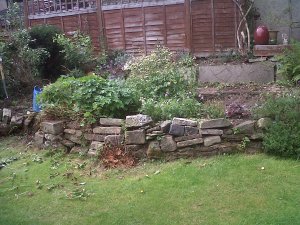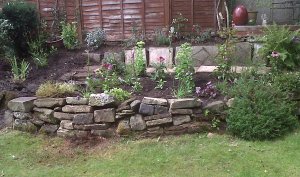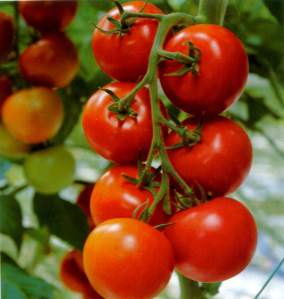 There’s always been a compost heap in the garden – right from the time I was very small so I’m amazed when I hear people saying “Oh I wouldn’t want a compost heap – they’re mucky or they attract rats and they’re ugly” – I really get quite agitated and find myself preaching the benefits of composting with almost evangelical zeal.
There’s always been a compost heap in the garden – right from the time I was very small so I’m amazed when I hear people saying “Oh I wouldn’t want a compost heap – they’re mucky or they attract rats and they’re ugly” – I really get quite agitated and find myself preaching the benefits of composting with almost evangelical zeal.
What you get from good compost is a really valuable nutritionally rich material to add to your garden. It adds structure to your soil and improves the pH balance. It’s a great way to recycle kitchen and garden waste and reduces the amount we send to landfill. And it’s free….which has to be good, and it’s a darned sight easier than carting big bags of mulch and expensive compost from the garden centre.
 So having said that how do you go about it? Well you can start with a heap – literally. That’s what we had at home and it was just a big pile in the corner. As more was added to the top we dug out the rotted material from bottom to use. It does work but that can get a bit messy and it’s certainly the slowest method. There are lots of ways of keeping the compost more tidy, and different kinds composting systems to speed up the process. For me it’s a 2 bay compost heap made up of old wooden pallets. If you take 7 pallets and make two squares of the pallets, securing them in the corners you end up with two ideal spaces to make and store the compost. If you have less space there are compost bins readily available to buy which work just as well. Or if you want something more cutting edge there are compost tumblers which you rotate and wormeries supplied with worms ready to get going, both of which speed up the process.
So having said that how do you go about it? Well you can start with a heap – literally. That’s what we had at home and it was just a big pile in the corner. As more was added to the top we dug out the rotted material from bottom to use. It does work but that can get a bit messy and it’s certainly the slowest method. There are lots of ways of keeping the compost more tidy, and different kinds composting systems to speed up the process. For me it’s a 2 bay compost heap made up of old wooden pallets. If you take 7 pallets and make two squares of the pallets, securing them in the corners you end up with two ideal spaces to make and store the compost. If you have less space there are compost bins readily available to buy which work just as well. Or if you want something more cutting edge there are compost tumblers which you rotate and wormeries supplied with worms ready to get going, both of which speed up the process.
My dad would have been amazed at how much there is said about how you should make a compost heap and what you should put in it. I seem to remember he just chucked all the vegetable matter from house and garden on it and that was that. But if you’ve never made one before there are some key do’s and don’ts.
Don’t add:
- Meat or meat products
- Fish
- Milk, cheese or any dairy related products
- Cooked food whatever it is including vegetables
- Really woody or thick prunings which would be hard to break down (although you could shred them)
- Citrus peel
- Perennial weeds
- Cat litter
Do add:
- Vegetable peelings and fruit peelings (ex citrus) etc from the kitchen
- Tea bags/leaves and coffee grounds
- Grass cuttings
- Annual weeds – although best not to use those with ripe seed heads
- Waste paper (preferably shredded)
- Old bedding plants and your cut down herbaceous plants
- Dead cut flowers from the house
- Any other exhausted plants from the greenhouse or your garden
- Egg shells
- Autumn leaves
- Old compost from pots either from the house or garden
- Thinner prunings although best shredded
 Be careful about adding diseased plant material to the heap. Some blight and club root affected plants should not go into the heap, but tomato blight (which I seem to get at the end of most seasons) will be gone by the time the old tomato plants have broken down, but if in doubt leave it out!
Be careful about adding diseased plant material to the heap. Some blight and club root affected plants should not go into the heap, but tomato blight (which I seem to get at the end of most seasons) will be gone by the time the old tomato plants have broken down, but if in doubt leave it out!
There are methods of adding material to your compost heap which can make the process quicker. I try not to add thick layers of grass clippings, leaves or shredded paper which can turn into a solid block in the composter. I fill up the first bay of my 2-bay pallet contraption. Then once it’s full you could empty it out, mix the contents really well and then put it back into the bay adding water between layers as you go. The heap will warm up as it composts. A couple of weeks later you can repeat this mixing step, watering again if the heap has become dry. The mixing action will introduce air which helps the composting process and can mean that you could have a finished product in a little as 6-8 weeks.
Whilst all that is going on in one bay I still have another bay to start all over again.
I must say I tend to just leave mine to compost naturally which can take up to 12 months, but I will check to see whether it’s too dry and if it is add some water. Cover the tops of the bays with a square of old carpet to keep the material in and keep the worst of the weather off.
When you have a rich brown crumbly material you’ve made really good compost, and once it goes brown and everything is well rotted you can assume the compost is ready. I have had compost which still has bits in it, which have rotted, but just not broken down finely. You could use that as it is or you could sieve it so that it is fine, or just put the bigger bits back into the compost to rot down further.
There are commercial accelerators available which you mix into the heap and which are made to speed up the whole thing. I haven’t seen the need to use one but you could give it a go.
And what to do with it after all that? Depending on where you’re putting it either you can use it as a mulch on established beds, or dig it into empty beds. You can also top dress pots and mulch around fruit trees and bushes or if you want to get really clever you can start mixing in other ingredients and make your own potting compost.
So if you can don’t put it in the bin, put it on the compost heap.

















